Q&A with Archilab Director Marie-Ange Brayer
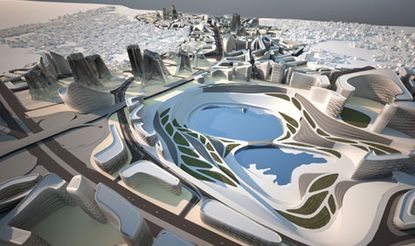
Focusing on the importance of architecture and urbanism in today’s European Union, this year’s Archilab exhibition opened last week in Orléans, France. The title is Strategic Architecture and the show this year is curated by Omar Akbar, director of the German Foundation Bauhaus-Dessau.

Click here to see more images of Archilab past and present
While the biennial architectural event’s official home, the Subsistances Militaires site, is currently being transformed by Jakob+MacFarlane architects, the event this year is being held in two locations: the FRAC Centre houses the show’s introduction, and a neighbouring church hosts the event’s main body, with 30 urban projects from all over Europe on show, from Riga Port City’s OMA master plan to Istanbul Kartal urban transformation by Zaha Hadid.
We met up with Marie-Ange Brayer, director of the FRAC Centre and artistic director of Archilab to discuss the exhibition
W*: What is Archilab?
Jean Pierre Sueur, then city mayor of Orléans, established Archilab in 1999 as an international gathering, to provide a valuable platform for architectural debate. As Archilab is an architectural event, its existence is of course also linked to the FRAC Centre’s architectural collection, which includes experimental architecture since the 1950s.
W*: How much did the event evolve since its creation?
Wallpaper* Newsletter
Receive our daily digest of inspiration, escapism and design stories from around the world direct to your inbox
With Frédéric Migayrou, (who co-founded Archilab with myself), we invite about 30 architectural teams for each event and they come and explain their latest projects. From 2004, when Archilab became a biennial event, a curator is invited. We wanted Archilab to develop into a lively laboratory of ideas, where this creative generation’s architectural voice can be heard.
W*: I understand there was an exception on the 2006 event, when Archilab focused specifically on Japan?
Indeed, Archilab 2006 was an exception in a way. We invited 30 Japanese architects to show the importance of the country’s current generation of architects, and their unique approach to ‘liquid urbanity’, where private and public spaces are melting into one.
W*: Is Archilab an indicator of new trends in contemporary architecture?
First and foremost, Archilab’s aim is to show architecture as a force field, representative of the current social, economic and cultural conditions.
W*: Is Archilab also concerned with the current sustainability issues in architecture?
Of course. In 2002, Archilab addressed the main sustainability issues through its ‘Economy of the Earth’ theme, and in the future, we also want to work on the relationship of architecture with science, and more particularly with genetics, nanotechnology, etc
W*: What is the event’s position in relation to the other international architectural events?
Archilab has been a leading force and influence in its field. We were of the very first to highlight in France the work of architects like Shigeru Ban, NOX, UN Studio and Enric Ruiz-Geli who are today internationally recognised. More than 300 architects have exhibited in Archilab. We have also witnessed throughout these events an increasing interest for architecture from the general public.
W*: This year Archilab focuses on European Strategic Architecture; why did you choose this topic?
Questions such as shrinking cities, ageing populations, urban crisis, are increasingly present and timely. We already approached the issues once in 2001 when Archilab presented in the courtyard of the Subsistances building a burnt down Detroit house, reconstructed by Kyong Park and Dan Pietra. Also in 2004, the curator Bart Lootsma invited Philip Oswalt to exhibit here the East Germany Shrinking Cities project, at the same time as Teddy Cruz presented his work on the Mexico and US border. But there is still so much to be said on urban planning and strategies.
W*: Did this lead you to invite Omar Akbar as this year’s curator?
Yes. Omar Akbar is the director of the Foundation Bauhaus-Dessau and has studied and worked extensively on contemporary urban issues. The aim of this year’s show was not to select projects for the specific architectural qualities of individual buildings, but to point out diverse strategies, which will define the outlines of whole cities and our urban environment in the years to come. We use a number of case studies to explore Europe’s future.
-
 Inside Valentino’s glamorous new Sloane Street store, inspired by the art of haute couture
Inside Valentino’s glamorous new Sloane Street store, inspired by the art of haute coutureThe latest in Valentino’s ‘The New Maison’ store concept opens on London’s Sloane Street this week, offering an enveloping marble and carpet-clad space of ‘intimacy and uniqueness’
By Jack Moss Published
-
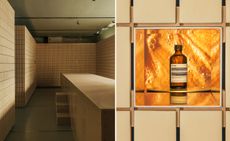 Aesop’s Salone del Mobile 2024 installations in Milan are multisensory experiences
Aesop’s Salone del Mobile 2024 installations in Milan are multisensory experiencesAesop has partnered with Salone del Mobile to launch a series of installations across Milan, tapping into sight, touch, taste, and scent
By Hannah Tindle Published
-
 Dial into the Boring Phone and more smartphone alternatives
Dial into the Boring Phone and more smartphone alternativesFrom the deliberately dull new Boring Phone to Honor’s latest hook-up with Porsche, a host of new devices that do the phone thing slightly differently
By Jonathan Bell Published
-
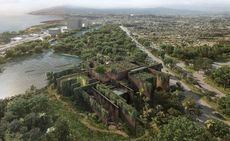 Out of office: coffee and creative small talk with Tatiana Bilbao
Out of office: coffee and creative small talk with Tatiana BilbaoBodil Blain, Wallpaper* columnist and founder of Cru Kafé, shares coffee and creative small talk with leading figures from the worlds of art, architecture, design, and fashion. This week, it’s Mexican architect Tatiana Bilbao, who is currently designing a brutalist, ethical aquarium in Mazatlán and has an exhibition at Copenhagen's Louisiana Museum of Modern Art opening in October 2019
By Bodil Blain Last updated
-
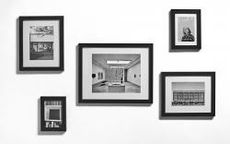 At home with Deborah Berke
At home with Deborah BerkeArchitect Deborah Berke talks to us about art, collaboration, climate change and the future, from the living room of her Long Island home
By Ellie Stathaki Last updated
-
 Rheaply redefines circular economy in architecture
Rheaply redefines circular economy in architectureOn Earth Day 2022, we speak to Rheaply founder Garry Cooper Jr about his innovative business that tackles reuse and upcycling in architecture and construction
By Ellie Stathaki Last updated
-
 Paolo Soleri's sustainable urban experiment Arcosanti enters new era
Paolo Soleri's sustainable urban experiment Arcosanti enters new eraWe meet Liz Martin-Malikian, Arcosanti’s new CEO, who takes us through the vision and future for Paolo Soleri's sustainable urban experiment
By Hilary Stunda Last updated
-
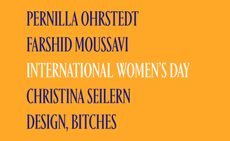 International Women’s Day: leading female architects in their own words
International Women’s Day: leading female architects in their own wordsInternational Women’s Day 2022 and Women’s History Month: Wallpaper* talks to four leading female architects about dreams, heroines and navigating the architecture world
By Harriet Thorpe Last updated
-
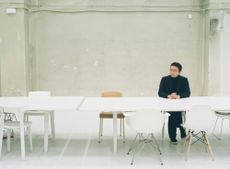 Sou Fujimoto judges Wallpaper* Design Awards 2022
Sou Fujimoto judges Wallpaper* Design Awards 2022We chat with Wallpaper* Design Awards 2022 judge Sou Fujimoto about his work in Japan and abroad, and our shortlisted designs and winners
By Jens H Jensen Last updated
-
 Dream the Combine cross-pollinates and conquers
Dream the Combine cross-pollinates and conquersThe American Midwest is shaking up the world of architecture. As part of our Next Generation 2022 project, we’re exploring ten local emerging practices pioneering change. Here we meet Minneapolis duo Dream the Combine
By Ellie Stathaki Last updated
-
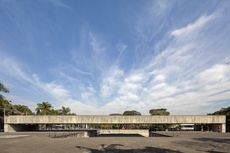 Architecture in the words of Paulo Mendes da Rocha
Architecture in the words of Paulo Mendes da RochaGreat modernist Paulo Mendes da Rocha passed away on 23 May 2021 aged 92. Here, we revisit the interview he gave Wallpaper* in 2010 for our Brazil-focussed June issue, talking about architecture, awards and his home country
By Isabel Martinez Abascal Last updated